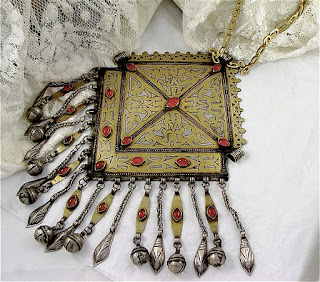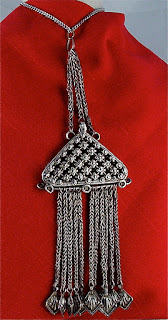Look on a map and find Mongolia, which is shared between Russia and China, and consider that in what the West calls the Middle Ages, the Mongols ruled the largest empire the world has ever known. It reached from all of Mongolia, all of China, Russia, all the 'stans (Kazakhstan, Kyrgyzstan, Turkmenistan, Uzbekistan, Tajikistan, Afghanistan, Pakistan and parts of India - Hindustan), also Armenia, parts of the Balkans and Central Europe, the Holy Land, Turkey, North Africa and the Arabian Gulf. Under the nominal rule of the Great Khan whose seat was closer to home, there were Khanates (kingdoms) established throughout the empire.
The Shahi Gandhara culture in south Afghanistan-Pakistan became a part of one of the Han, (Khan) Khanates. The ruler, like other rulers, needed coins; after all, most kings and parliaments do not want to collect tribute (taxes) in the form of eggs or cheese. The local Khan wanted a proper image for his coinage. Since every Mongol (Han) conquest had been won from the back of a horse, a horse and a ruler riding it became the natural choice for a symbol of the new ruler in Gandhara.
A coin with a kneeling horse on one side and a rider with a staff mounted on the back of the horse on the opposite side is how the coinage was cast in Gandhara. Quoting from Wikipedia:
... The Gupta (The Gupta Empire was an ancient Indian empire which existed approximately from 320 to 550 CE and covered much of the Indian Subcontinent.) emperors continued to issue coinage until the 6th century, until waves of invasions from the Huns (Hans, Khans) brought their reign to an end. These Huns themselves issued coinage which was imitated from the earlier prototypes.
Allan & Stern (2008) report on Indian coinage of the Middle Ages:
A notable adaptation of a Hun design was the neat silver coinage of the Shahis of Ghandara, the "bull and horseman" type in the 9th and 10th centuries, (later) extensively imitated by the Muslim conquerors of India and the contemporary minor Hindu dynasties.
For example, here are the two sides of one of such coins I have in my collection:
The image on the left shows the ruler with a long staff and banner, wearing a wide-brimmed sun hat (in the Gandhara region in the southern part of Afghanistan, that is a very good idea).
The horse is prancing proudly showing his left leg raised, with a decorated mane and his tail
and head carried high. The image on the right shows the horse kneeling with script above him in an ancient Hindi style. The horse is already saddled, so it is probably kneeling for the ruler to mount him. Since in that part of the sub-continent, both camels and elephants knelt to allow the rider to mount, perhaps horses were also trained to kneel?
To see more particulars on the collection of
this coinage that I have, go to







































